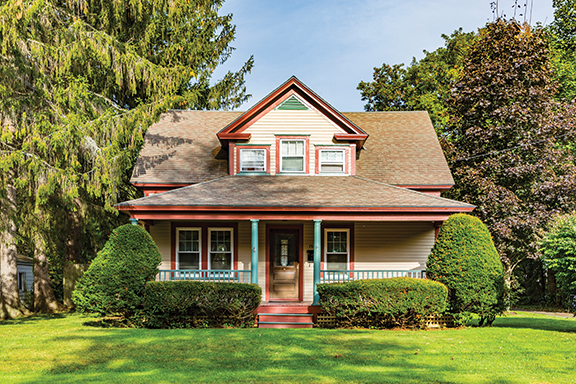The Single-Family Rental Market Has Become a Search for Supply

Investors Are Exploring New Ways to Expand Supply
by Greg Godderidge
The durability and stability of the Single-Family Rental (SFR) market is one of the few real estate investment bright spots of the past year. If the 2020 trend continues, the SFR asset class is positioned to be one of the biggest stories of 2021. With the backdrop of a national housing supply/demand imbalance, the SFR growth trend is so strong that a new Build-to-Rent (BTR) micro-SFR market has been created by enterprising and forward-looking market participants for the purposes of creating additional rental housing stock.
Build-to-Rent single-family homes coupled with traditional single-family properties are forming the backbone for a vibrant SFR industry. What is driving this demand for tenants, builders, and investors? And is there a role for evaluation service providers?
According to the Census Bureau, occupancy rates across all single-family rentals averaged 95.3 percent in the third quarter of 2020, holding steady from the second quarter, following a 100-basis points spike from the first quarter. That is the highest reading for the SFR market since 1994. From their 2007 lows, occupancy rates for all SFR properties are up by 5.6 percent.
What’s driving occupancy rates skyward is a combination of relentless demand and evaporating supply. Increasing numbers of Millennials have been fueling demand as they have formed families and moved out of multifamily properties. The COVID crisis accelerated demand for SFR properties as tenants have moved from cities in search of more indoor and outdoor space.
At the same time the traditional sources of rental property inventory have dried up. Foreclosures are on hold nationwide, retirees who are usually looking to downsize are staying put during the pandemic, and it is getting increasingly difficult to find mom-and-pop property owners seeking to sell.
Creating New Supply
Together, those pressures have spurred home builders to create additional supply. Build-to-rent properties have been on an upward trend for the last two decades but have skyrocketed in the past year. There were more than 14,000 BTR starts in the third quarter of 2020, representing a 27 percent pop over the previous year, according to the National Association of Home Builders.
Investors have taken notice, attracted not only to the steady cash flow of rental properties but also its stability. The most attractive element is opportunity. The SFR market is still small and fragmented with the 20 biggest single-family rental operators controlling only about 300,000 units. That leaves roughly 16 million rental units nationwide that have not yet been aggregated and securitized.
Expansion into this vast untapped sector of the market is dependent on the ability to review and evaluate properties at scale. This has been a challenge during a public health crisis when in-person and on-site inspections are limited. Radian offers a range of services to facilitate securitization of SFR and BTR properties. Our collateral review and validation services include a thorough review and validation of sponsor and/or borrower data, property documentation and loan files. This is especially important for large institutional investors. In fact, we have served as diligence agent for every institutional SFR securitization transaction to date. Professional due diligence services allow buyers to have more control over their acquisitions and at the same time give lenders an extra level of confidence in the quality of the transactions they underwrite.
SFR Market Being Driven to New Heights
Currently, approximately only 6 percent of new single-family homes are purpose-BTR, which should contribute about 700,000 new units over the next 10 years. That is not nearly enough to meet demand, says real estate advisor RCLCO. Based on current trends, RCLCO believes the SFR market will likely be undersupplied over the next decade, despite the increased attention the segment is currently receiving.
A historic confluence of economic, demographic, and public health trends is driving the SFR market to new heights. As the market matures and earns more recognition as its own asset class, new investors including institutional players, will explore new ways to expand supply, either by aggregating existing properties or building new ones.
One prediction seems certain: The industry will continue to rely on professional collateral review and diligence services to make that search for supply more profitable.














